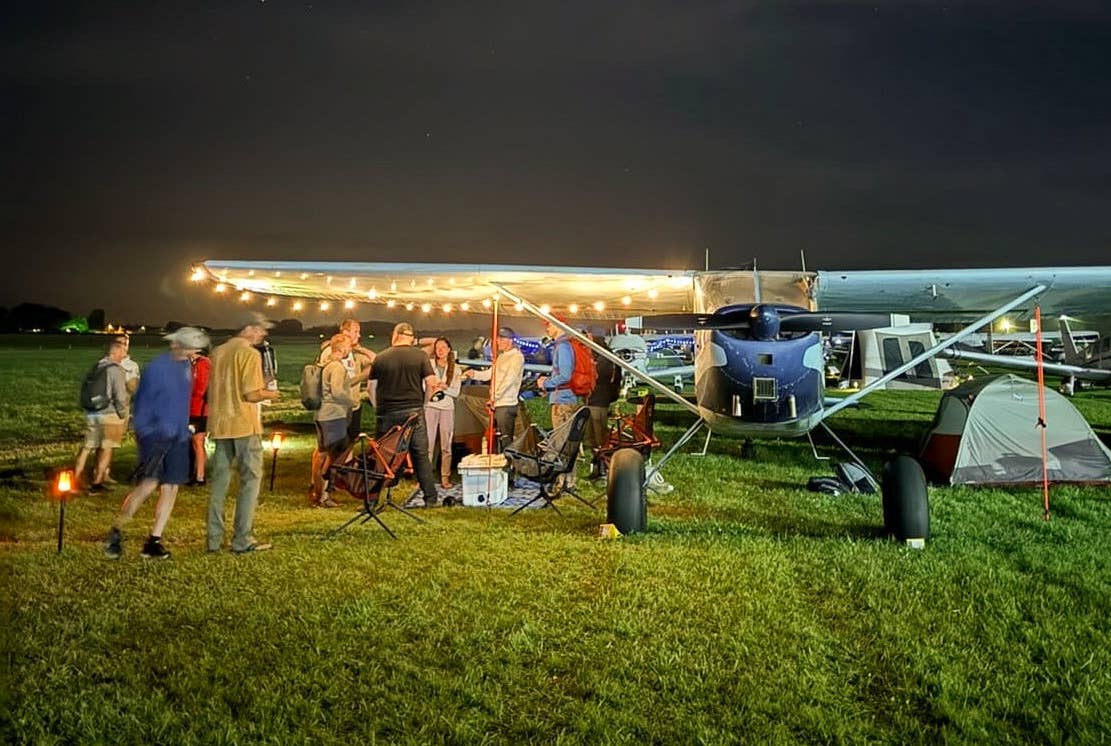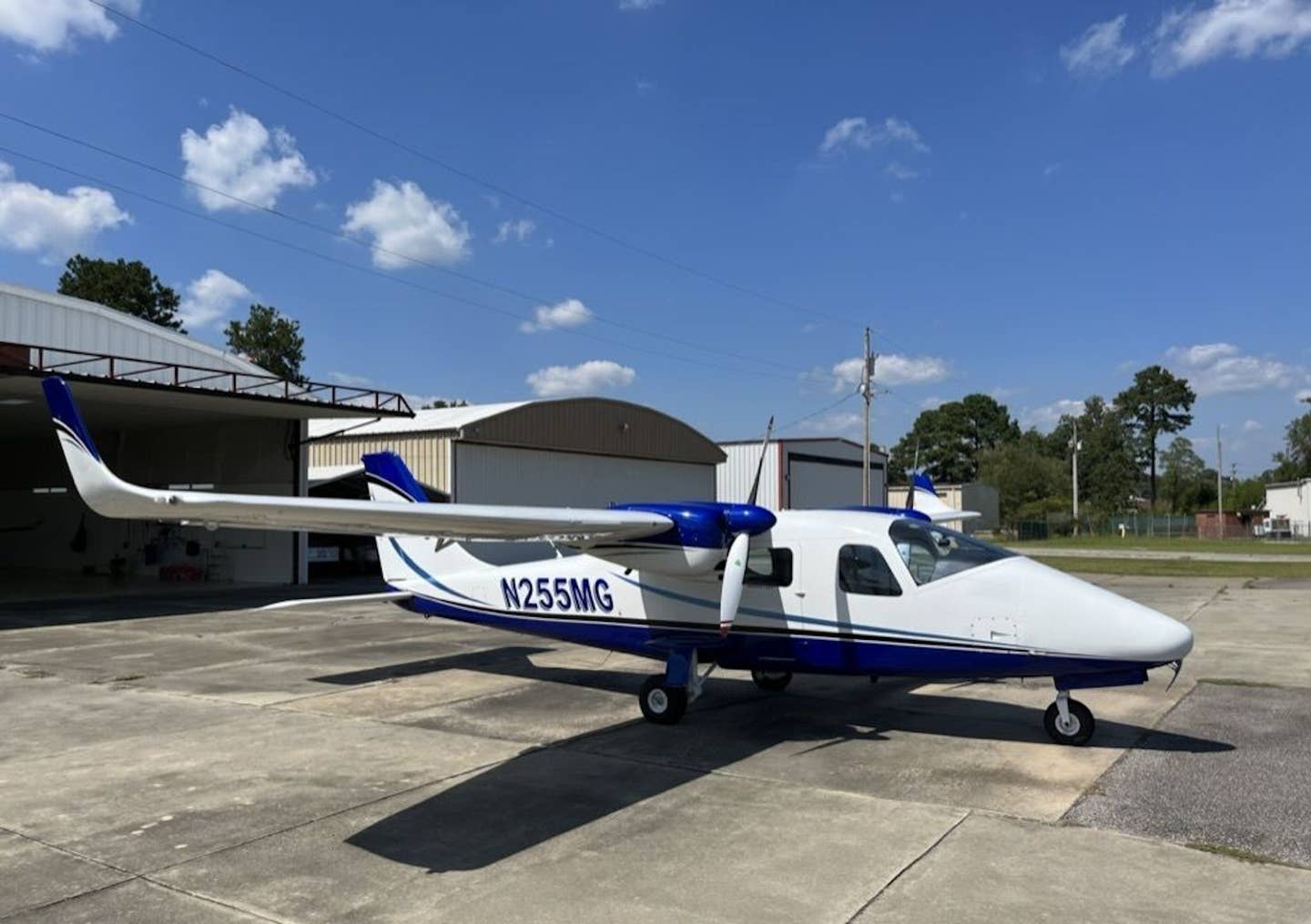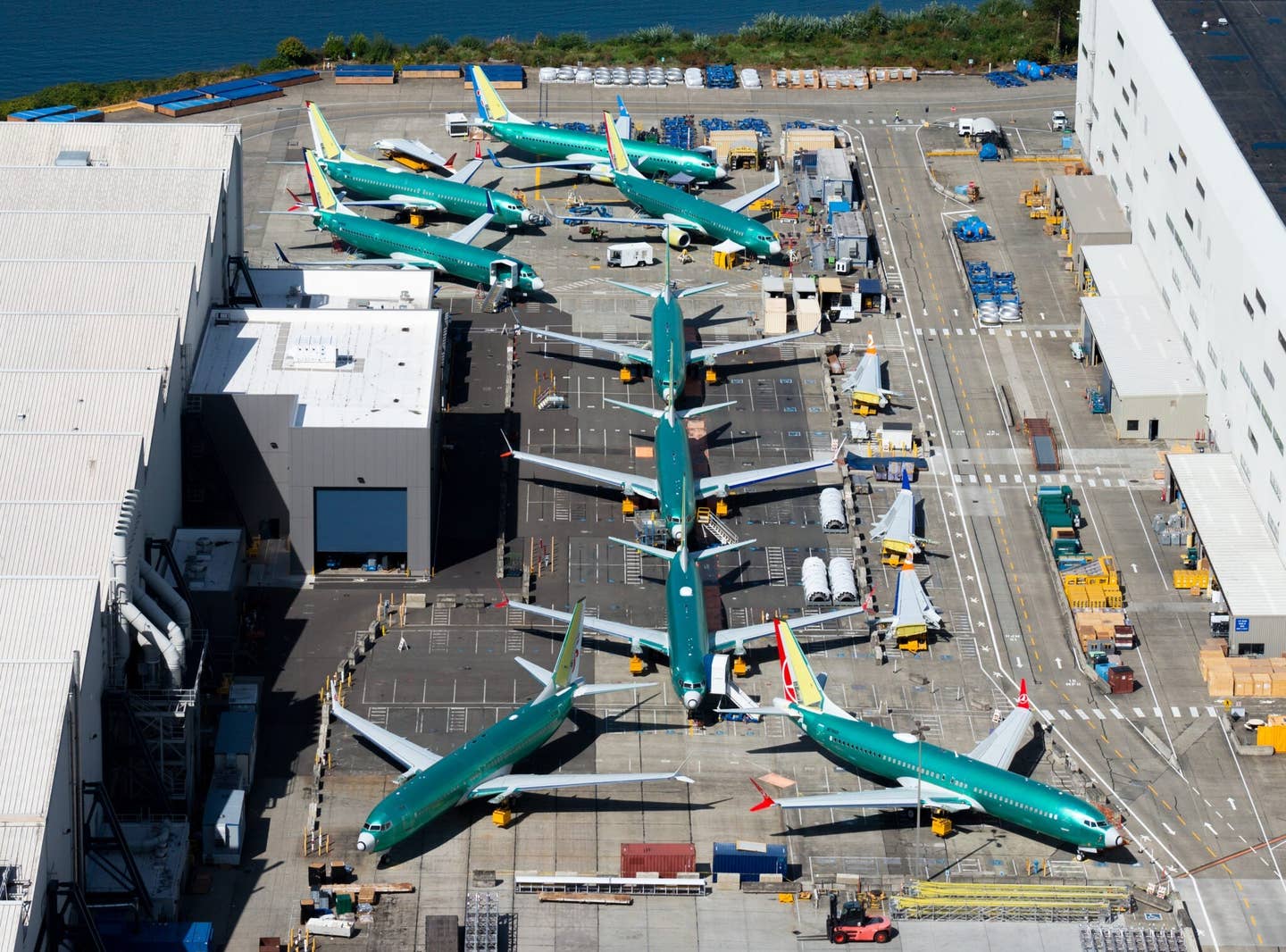5 of the Best Pieces of Gear for Epic Underwing Camping
Whether at AirVenture or sleeping under the stars, here’s what you’ll want to have with you.

The right gear helps to create the perfect underwing soirée at EAA AirVenture in July at Oshkosh, Wisconsin. [Courtesy: Bella McFarland]
Over the years, I’ve learned that the more you attend the EAA AirVenture fly-in at Oshkosh, Wisconsin, the more the event becomes about the people rather than the airplanes.
When I first visited in 1998 or so, my mind boggled at the incredible variety of flying rarities on display, and with my cheap film camera in hand, I pursued them all with ferocity. Now, having stalked and captured the most intriguing specimens—and having met new friends every year—AirVenture has become an annual reunion of some of my favorite people in the world.
Historically, I’d spend the week wandering around the grounds, either encountering friends entirely by chance or by arranging various meeting times and locations (1 p.m. in the shade beneath the Piaggio Royal Gull, for example). But now, with an airplane of my own, everything has changed.
Namely, I now make a point to create my very own underwing patio. A gathering place with cool shade, comfy chairs, ice-cold drinks, and pleasant company. Having set up and hosted such meeting spots for three years, I believe I’ve discovered some of the most crucial elements.
Nemo Stargaze Reclining Camp Chair ($250)
When it comes to items that separate you from the ground, I believe it’s well worth spending a premium for the good stuff. Tires, mattresses, shoes, rock-climbing rope, and parachutes come to mind. This is a category where the cheapest options can create experiences that are miserable at best or disastrous at worst.
In the world of folding chairs, it seems quality is proportional to cost. After researching and sampling many various options, I’ve finally arrived at the Nemo Stargaze reclining camp chair. While pricey at $250, this is one of those items you buy once and enjoy forever. The perfect design and sleep-inducing comfort endure long after you’ve forgotten about the money you’ve spent.
Like most folding chairs, the Stargaze packs down into a smaller zippered carrying bag. It doesn’t pack down quite as small as some chairs out there, but it’s a worthy price to pay for sublime comfort. It’s also quick and easy to set up, with no tricky fitments or overly tight tolerances to annoy you. At night, to prevent the chair from becoming soaked in dew, it only takes a few seconds to unclip the two anchor points and toss the fabric part into a tent.
I bought a couple of extras for friends, and everyone remarked about how comfy they were. With dedicated pockets for a drink and a phone, everyone settles in, and few look forward to getting back up.
Solar-Powered String Lights ($33)
On a warm summer night with a light breeze and sparkling conversation, it’s really nice to add just a bit of ambiance. In typical camping environments, a campfire is ideal—but with 40 or so gallons of 100LL just overhead, there are better options.
I’m a fan of the Lepro brand string lights I found on Amazon. With solar power, the lights charge up during the day and then turn on at night. I hang mine up beneath the wing and simply set the small solar panel on top of the plane.
There is one downside. They won’t turn on until the photocell is convinced it’s completely dark out. This is annoying, as I find myself wanting the lights to turn on about an hour or two before they do. Accordingly, I have to use tape to cover the photocell as dusk settles in.
I put up with the annoyance, however, because unlike many string lights out there, the Lepros have a nice, warm, golden glow despite being LEDs. This creates a pleasant atmosphere that you really appreciate after seeing other LED string lights that have a high color temperature.
This year, for example, one camping neighbor’s harsh whitish-blue lights created an atmosphere every bit as charming as a vape shop in a strip mall, whereas my campsite was warm and inviting.
Pelican 30-Quart Elite Cooler ($250)
Icy-cold drinks are critical in hot, humid Wisconsin summers.
The first year I attended AirVenture as an airplane owner, I brought along a cheap styrofoam cooler to keep drinks chilled. It lasted about three days before cracking and being rendered useless.
The subsequent hunt for the perfect cooler was more complex than I expected. I wanted the perfect size—small enough to fit into my back seat for transport, yet big enough to hold a fair amount of beverages. I also decided I wanted one that performed well, as it would be sitting outside in the sun all day, every day.
I decided on the Pelican 30-quart Elite cooler. Compared to the equivalent Yeti, it has thicker walls, and I reasoned this equates to better insulation. It also has more robust latches and features some shallow cup holders on top that make it a decent side table or ottoman when closed.
I ordered white to better reflect the sun throughout the day, and it has performed beautifully. I typically add a small bag of ice once per day, which is more than necessary. Now, two years into ownership, I can’t find a single aspect to complain about.
Alps Mountaineering Camp Table ($80)
A good underwing table is the least exciting item on the list but also arguably the most useful.
Whether used to brew coffee, prepare meals, or simply keep everyday items in a handy, orderly state, it earns its keep every day. The trick is finding one that is perfectly sized for GA camping.
At 28 inches square and 27 inches tall, the Alps Mountaineering Camp Table fits the bill. Even better, it quickly collapses into a 7.5-by-4-by-28-inch pouch for transport and, with its aluminum construction, weighs only 6 pounds. The top can be easily removed and hosed off if needed, and while parts of it are plastic, everything appears to be relatively robust and durable.
I’ve found that a good camp table isn’t truly valued until you’ve used it—and then you have to go without it. Suddenly, things like food, phone chargers, sunscreen, and all the random miscellanea that one compiles throughout the day begin to collect on the ground and in various corners of the aircraft cabin. It’s one item I’m happy to have along on any camping trip.
Anker Power Station ($329-$600)
As airplane campsites at AirVenture lack any kind of power, keeping devices charged has always been a challenge.
Historically, my strategy was to use two small 20,000 mAh power banks, leaving one plugged into a communal charging station overnight—unattended—while using the other. While this did keep my phone charged, it became annoying to monitor the charge levels of each, hoping to find an available outlet at the charging station…and then hoping it wouldn’t grow legs and walk away.
This year, I went nuclear. Not literally, although the power output of my big Anker C1000 1,056 watt-hour (Wh) charging station sometimes has me guessing. While expensive, there is another option at $600, only $100 more than the next smaller option, and I like to err on the side of more capacity.
I wasn’t sure about how much capacity I’d actually need. I knew I’d have a guest in their own tent next to my plane for the week, and I knew that we both wanted to keep our devices fully charged. I also knew that, as a good host, I’d like to be able to offer a top-off to friends stopping by for a visit.
For nine days, I did all of these things—and ended up using less than half of the C1000’s total capacity of 1,056 Wh. So, I clearly overbought. The upside? Now, I know I can run a couple of small fans at future AirVentures to keep cool and keep mosquitos away.
So, based on my own mission requirements, the smaller $500 Anker C800 Plus, with 768 Wh of capacity, would easily suffice while saving me money. For just one person, the even smaller Anker 535, with 512 Wh of capacity, would likely be just fine.
Regardless of which model you choose, having all the power you need right at your airplane for a week or more is a total game changer.

Subscribe to Our Newsletter
Get the latest FLYING stories delivered directly to your inbox






